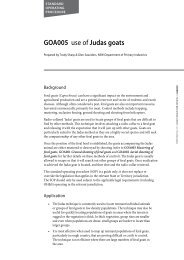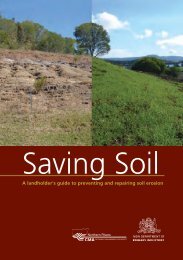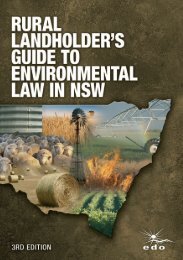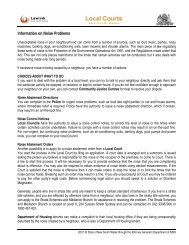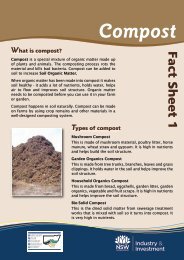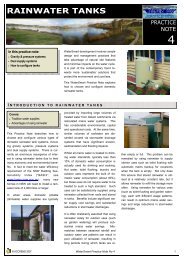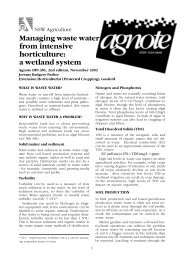Agricultural Fire Management Guidelines - Guide to Rural ...
Agricultural Fire Management Guidelines - Guide to Rural ...
Agricultural Fire Management Guidelines - Guide to Rural ...
You also want an ePaper? Increase the reach of your titles
YUMPU automatically turns print PDFs into web optimized ePapers that Google loves.
Section 2 Background2. <strong>Fire</strong> management planningprocess<strong>Fire</strong> management planningEffective fi re management is a continual process thatinvolves:• planning for fi re safety;• implementing these plans;• checking that what was planned has been done and iseffective; and• reviewing and changing these plans when necessary.This type of continual process (see Figure 8 and Propertyfi re management plans, page31) occurs both at a propertyscale and at a larger public scale.Both scales are important <strong>to</strong>secure fi re safety across the rurallandscape.PlanDoGovernment authoritiesundertake fi re managementplanning as part of theirresponsibility for public safetyReviewCheckFigure 8: The continuousimprovement cycleand <strong>to</strong> support communities and industries. This includesdeveloping and implementing plans and documents such asmunicipal and regional fi re prevention plans and the Code ofPractice for <strong>Fire</strong> <strong>Management</strong> on Public Land (DSE 2006).At a property level, fi re management may range fromdeveloping and undertaking simple unwritten plans <strong>to</strong>more complex documented plans, depending on the riskspresent.<strong>Rural</strong> landowners and managers are encouraged <strong>to</strong> have awritten plan so that it is easier for them <strong>to</strong> consider fi re riskissues on their property and <strong>to</strong> communicate these issues <strong>to</strong>others.Risk managementThe concept of risk management underpins all decisionsin fi re management. It involves identifying fi re risks andbalancing the likelihood of a fi re against the consequencesshould one occur. For example, while an event like a fi remay be unlikely <strong>to</strong> happen, its consequences can be majoror even catastrophic. Consequently, plans are needed <strong>to</strong>minimise risk.When planning fi re management, it is important <strong>to</strong> thinkabout economic, environmental and social risks (risks <strong>to</strong>people). The impact of both fi re prevention activities and fi reitself can affect safety, the environment and the long-termsustainability of a property.10 On the Land: <strong>Agricultural</strong> <strong>Fire</strong> <strong>Management</strong> <strong><strong>Guide</strong>lines</strong>





